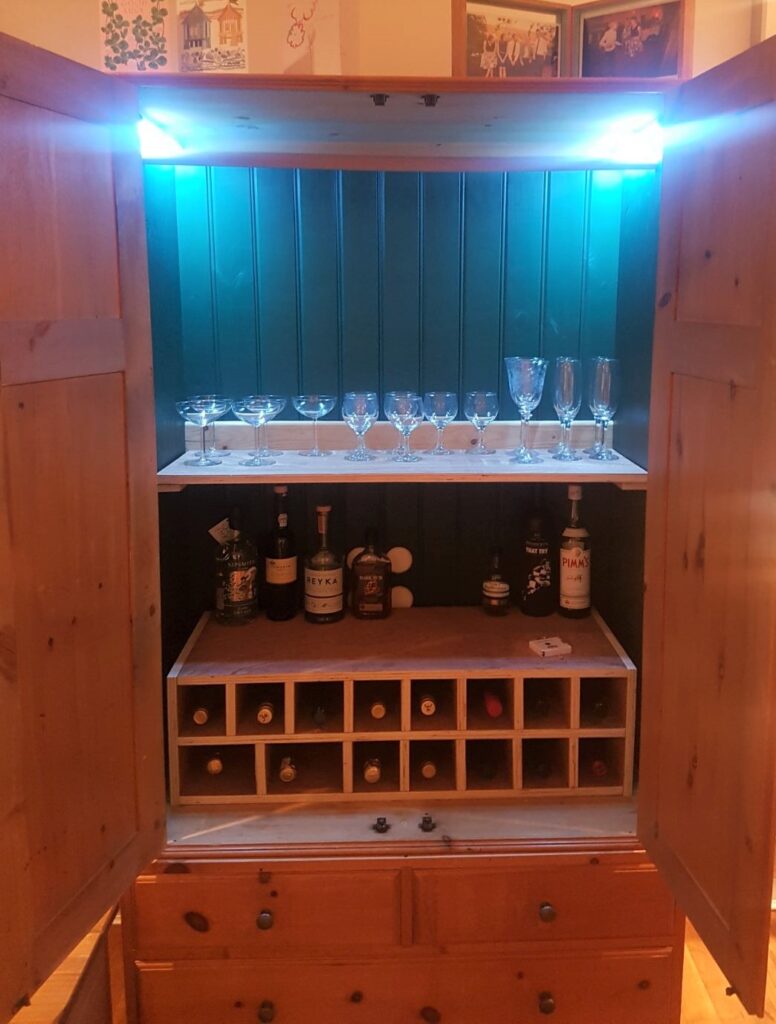If anything is causing us to rush into the chaos brought about by climate change, it is the very human desire for novelty. In the past, this curious and adventurous spirit has brought humanity unimagined gains, but it is time to rethink how we direct our desire for the new.
We all love objects and experiences that are original and there is nothing wrong with indulging from time to time. However, despite what social media may suggest, we don’t need to do it all the time. Our desire for change can often be satisfied just as easily and joyfully closer to home.

The allure of travel
First, mea culpa. As a young person, I was addicted to travel, saving every penny from holiday and Saturday jobs to fund my next adventure. And I still love to explore new lands and cultures. Abroad, all is new. As someone fascinated by everyone and everything, travel is my cerebral sweetie shop. Since so many of my best memories are from other locations, I would be the last person to say that travel is bad.
However, travel, especially air travel, does have consequences for the planet. My husband recently went on a business trip to the Dolomites in Italy. He sent me this glorious picture below, but when he returned he said the towns near where he was staying were sad places with closed hotels and restaurants, few facilities and many boarded up houses. This region, once a thriving tourist resort for skiers, is now empty. The snow has gone and so too the income that sustained their communities.

Last year in France, half of the 7,500 slopes closed due to inadequate snow fall and this has been repeated all over the world. Of course, this is devastating for the hotels and restaurants reliant on that trade, but it is also a rather worrying indicator of how our climate is changing.
In contrast, some places like Venice are so overwhelmed with tourists that they have introduced a tourist tax in part to deal with the excessive amount of rubbish. Such fragile and historic places are also put under great strain by the mere footfall of so many people and the services they require. Venice is a unique place, but there are certainly many other equally wonderful cities to explore without feeling that you are in a crowd at a football stadium.
I have probably bored everyone witless with my stories from Scotland, but our country is so rich in history, landscape and culture that one could not exhaust it in one life-time.
Shop till you drop
As the spring sunshine prompts us to shed our winter wear, how tempting it is to celebrate with a new, seasonally appropriate outfit. Gorgeous brochures flop through the letter box, pop ups litter our feeds and unless you entirely avoid anywhere with a retail outlet, we are bombarded with gorgeous possibilities.
Most of us are aware that a desire to buy continuously can be a sign of deeper problems, but even the most well-balanced of souls will fancy something new now and again.

But satisfying this desire need not cost the Earth – metaphorically or literally. It takes a little more research, but it is possible to buy goods that support communities without destroying their environments or health. We can choose to buy well-made products that we know will last beyond the next few months. We can choose companies who have strict policies on who makes their clothes and the conditions under which they make them. We can also choose those companies who favour organic materials, thus saving the farmers and locals from the ill-effects of pesticides. In the end, these products will not only make us look good but feel good too.
New for old
For extra virtue points, we can but some of our clothes from charity shops. My husband gets most of his shirts there: many are new with tags and some have only once seen a washing machine. For a few pounds, he obtains designer shirts that look fantastic. (I think I need to start looking in the men’s section!)
EBay offers second-hand goods at super cheap prices and with exceptional choice. Freecycle offers all kinds of things from sofas to children’s toys for free. You only need to sign up to join.
I know many people are reluctant to go down this route from a sort of pride (and it took me a while to get my head around it) but I think it is worth trying to change our attitude. Here are goods we can enjoy and save from the over-flowing landfill sites and help worthy causes at the same time.
And if you’d rather not enjoy someone else’s recycled clothing, perhaps you might enjoy up-cycling your own! On a rare occasion that I was watching The Sewing Bee, they were practising visible mending or the Japanese art of sashiko. Done properly, sashiko aims not only to mend an item but to actually make it more beautiful. The knitwear expert, Flora Collingwood-Norris, certainly achieves this and adds exquisite embroidery to much loved, needing-care jumpers.

Image: Karen Costello-McFeat on Unsplash
Suitably inspired, I set about making my own repairs to a pinafore I love but which Hermione clearly did not. (As a puppy, she chewed everything and this was just one more casualty.) The tear was L-shaped and difficult to sew neatly. It would need a patch. With the aid of Bondaweb, I made one and used a heart-shaped blanket stitch to attach it. Though far from professional, it makes me smile and has reclaimed my pinafore for another few years of wear.
Avoiding being a dedicated follower of fashion
Although we tend to think of fashion in terms of clothing, it spreads across all aspects of manufacturing from the shape of cars to the colour of appliances. Each month I receive Country Living magazine and often chuckle over the headlines that state that florals are now in a month after extolling the virtue of Swedish minimalism. To be a dedicated follower of fashion, we’d need a very big budget indeed. We’d also need to dispose of everything mere weeks after their purchase, which is hardly a sensible way to behave.
An alternative is to try to avoid being quite in fashion at all – selecting what you love and suits you and your life-style and not worrying too much if it is on trend. Another way is to take advantage of things out of fashion and make them your own. A rather enterprising friend’s daughter used her woodworking skills to take an old wardrobe and transform it into a drinks cabinet.
Older furniture can be picked up for a song and is often made with high quality wood.

In books and on-line there are any number of brilliant folk willing to show us how to use the materials of the planet more wisely. Through following their advice, we may not bring about significant change by ourselves, but we can be part of a larger mind-shift that may, just may, save us all.

You were actually way ahead of the curve On recycling Karen. You hired your wedding gown. How incredibly green was that in 1988 or 9? ❤️❤️❤️❤️
Thank you Sally! Amazed you remember! I hope we can catch up soon. Summer is definitely on its way. xx